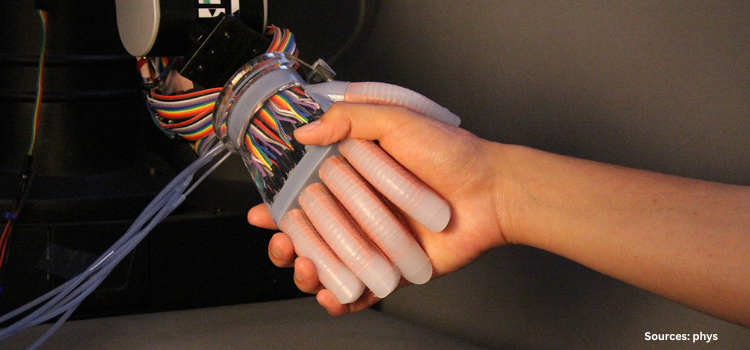Mexico Eye Tracking Market by Type (Head Mounted Eye Tracker and Remote Eye Tracker), by Component (Hardware and Software), by Application (Assistive Communication, Academic Research, Consumer Behavior Research, Usability Testing and Other Applications), and by End-User Industry (Retail, Automotive, Healthcare, Government and Others)- Opportunity Analysis and Industry Forecast, 2024– 2030
Industry: Semiconductor & Electronics | Publish Date: 02-Jan-2025 | No of Pages: 143 | No. of Tables: 108 | No. of Figures: 53 | Format: PDF | Report Code : SE2453
Mexico Eye Tracking Market Overview
The Mexico Eye Tracking Market size was valued at USD 14.5 million in 2023, and is predicted to reach USD 105.2 million by 2030, at a CAGR of 31.5% from 2024 to 2030. The eye tracking industry is a comprehensive ecosystem of products, services, and technologies designed to measure and analyze eye movements, gaze direction, and fixation points. This market includes specialized hardware such as cameras, sensors, and light sources, as well as software solutions for data processing and analysis.
Eye tracking, also known as eye monitoring systems are applied across various industries such as psychology, market research, user experience testing, and human-computer interaction to provide insights into consumer behavior, visual perception, and interface usability.
In the contemporary landscape of user experience and human-computer interaction, eye monitoring systems emerges as an indispensable tool, offering invaluable insights into user engagement and interface usability. By meticulously scrutinizing how users navigate digital interfaces and websites, designers can discern pain points, optimize layouts, and refine interactions to foster seamless user experiences.
Increasing Demand from Retail Sectors Drives Eye Tracking Market Growth
The growth of the eye tracking market in Mexico is significantly driven by the increasing demand from the retail sector. Mexican retailers are increasingly adopting eye-tracking technology to gain deeper insights into consumer behavior and preferences. By analyzing where shoppers focus their gaze and how they interact with products, retailers can optimize store layouts, product placements, and marketing strategies to enhance customer experience and drive sales.
This technology also enables real-time market research, providing valuable feedback on consumer engagement with displays and promotions. As a result, eye-tracking systems not only enhance operational efficiency but also empower retailers to make data-driven decisions that improve marketing effectiveness and product offerings.
Growing Automotive Industry Drives Growth of the Mexico Eye Tracking Market
Mexico's automotive market is witnessing significant growth, fueled by its reputation as a hub for vehicle modification. As automotive enthusiasts and professionals in Mexico increasingly customize vehicles with advanced features and safety systems, the demand for eye-tracking solutions for driver monitoring and safety enhancements is on the rise.
Eye tracking technology plays a crucial role in enhancing driver safety by monitoring attentiveness and fatigue levels, thereby reducing the risk of accidents. Moreover, the integration of eye tracking in vehicle modifications enhances the overall user experience by providing intuitive control and interaction interfaces tailored to driver preferences, driving market growth in the country.
Proliferation of Alternative Technologies Hinders the Mexico Eye Tracking Market Expansion
The Mexico eye tracking market expansion is significantly restrained by the proliferation of alternative technologies such as gesture recognition, unimodal methods, and multimodal activity recognition.
In sectors such as consumer electronics and gaming, where predicting user behavior is crucial, these alternative technologies offer valuable insights that surpass the capabilities of traditional eye tracking market. Such availability and adoption of these alternatives limit the market's growth potential by providing competitive solutions that meet diverse user needs and preferences.
Integration of AR and VR in Eye Tracking Technology Create Future Market Prospects
The integration of eye monitoring systems across various sectors, including augmented reality (AR), virtual reality (VR), lie-detection systems, and cognitive testing, is poised to unlock significant opportunities within the Mexico eye tracking market growth.
This technology plays a crucial role in enhancing image clarity and reducing eye strain in AR and VR applications, making it a dynamic field driven by startups and investments from tech giants such as Apple, Google, Facebook, and Samsung. For instance, in March 2022, Mojo Vision announced a new advanced prototype of its AR smart contact lens Mojo Lens.
The prototype includes various new hardware features and advanced technologies such as advanced display, communications, eye tracking technology, and a power system embedded into the lens. It allows users to access timely information quickly and discreetly without forcing them to look down at a screen.
Competitive Landscape
The key market players operating in the Mexico eye tracking industry include Tobii AB, Smart Eye AB, Lattice Semiconductor Corp, Ogilvy, Seeing Machines Limited, AVSimulation, Lumen, Eyetech Digital Systems, Inc., EyeTracking, Gazepoint, Eyegaze, Eyeware Tech, SR Research Ltd., Pupil Labs, and Irisbond Crowdbonding, S.L. and others.
Mexico Eye Tracking Market Key Segments
By Type
-
Head Mounted Eye Tracker
-
Remote Eye Tracker
By Component
-
Hardware
-
Software
By Application
-
Assistive Communication
-
Academic Research
-
Consumer Behavior Research
-
Usability Testing
-
Other Applications
By End-User Industry
-
Retail
-
Automotive
-
Healthcare
-
Government
-
Others
REPORT SCOPE AND SEGMENTATION:
|
Parameters |
Details |
|
Market Size in 2023 |
USD 14.5 Million |
|
Revenue Forecast in 2030 |
USD 105.2 Million |
|
Growth Rate |
CAGR of 31.5% from 2024 to 2030 |
|
Analysis Period |
2023–2030 |
|
Base Year Considered |
2023 |
|
Forecast Period |
2024–2030 |
|
Market Size Estimation |
Million (USD) |
|
Growth Factors |
|
|
Companies Profiled |
15 |
|
Market Share |
Available for 10 companies |
|
Customization Scope |
|
|
Pricing and Purchase Options |
Avail customized purchase options to meet your exact research needs. |
|
Customization Scope |
Free customization (equivalent up to 80 working hours of analysts) after purchase. Addition or alteration to country, regional, and segment scope. |
|
Pricing and Purchase Options |
Avail customized purchase options to meet your exact research needs. |
KEY PLAYERS
-
Tobii AB
-
Smart Eye AB
-
Lattice Semiconductor Corp
-
Ogilvy
-
Seeing Machines Limited
-
AVSimulation
-
Lumen
-
Eyetech Digital Systems, Inc.
-
EyeTracking
-
Gazepoint
-
Eyegaze
-
Eyeware Tech
-
SR Research Ltd.
-
Pupil Labs
-
Irisbond Crowdbonding, S.L.














 Speak to Our Analyst
Speak to Our Analyst





















